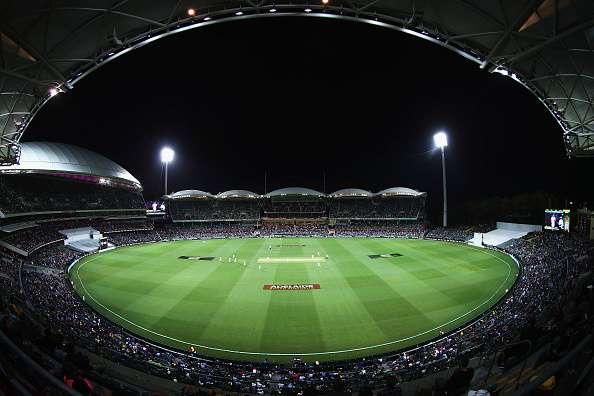Alison Mitchell urges a note of caution after the first pink ball Test
Cricket Australia and broadcaster Channel Nine have lauded the bumper viewing figures achieved by showing Test cricket on prime-time TV during the inaugural day-night Test in Adelaide.
A peak audience of 3.2 million tuned into the thrilling climax on day three of the match between Australia and New Zealand, which represented 13.9 percent of Australia’s population. In the UK, that would have been the equivalent of 8.9m; the sort of top ratings associated with Coronation Street and I’m a Celebrity Get Me Out of Here.
Cricket Australia chief executive James Sutherland spoke on breakfast radio announcing a desire to stage another day-night Test in the country next year, while Nine’s head of sport Steve Crawley declared: “It’s certain day-night Test cricket is here to stay.”
Meanwhile, a more cautionary note was being sounded at the team hotel.
New Zealand coach Mike Hesson addressed the media in the aftermath of the match and suggested a few tweaks be made to both the ball and the conditions to slightly tilt the balance towards the batsmen after a low-scoring match.
“You do struggle to see the seam at night,” he commented. “We all enjoyed the fact that the ball swung, but it (the seam) is a bit more of a haze than a normal ball.”
“You take a tiny bit of grass off the pitch, even the balance up a little bit, fix the seam up, and I think you’ve got a pretty damn good spectacle.”
Despite some batsmen having difficulty seeing the dark green seam during twilight, this is a feature of the pink ball that is unlikely to change. The MCC and Kookaburra have already tested a variety of colours and results showed that dark green stitching was best for visibility. Players may just have to live with the best being less than perfect.
The Adelaide pitch had been left with an unusually thick covering of grass to help preserve the ball by lessening the scuffing and stopping it losing its colour.
Hesson felt the grass shifted the balance too much towards the bowlers, although he acknowledged that, overall, the day-night concept delivered in terms of crowd numbers, with nearly 124,000 attending over the three days – a figure that outstrips the 50,000 aggregate that attended each of the last three Tests between Australia and New Zealand at the same venue.
Given the excitement generated by the day-night Test, there is no question that more floodlit Test matches should be played – not least because one match is too small a sample size to determine if this format can be successful all over the world.
In addition to the later start time and exciting climax, five factors contributed to the success of the Adelaide Test.
1 – It was the first of its kind, so novelty value was high.
2 – Tickets were affordable and accessible; particularly with $20 twilight tickets for adult entry ($10 for kids) post 4pm. Sunday’s family ticket offered two children free with two paying adults.
3 – The Adelaide Test is one of the social events of the year in its own right in South Australia, and a place ‘to be seen,’ putting on great entertainment and live music for members behind the pavilion in addition to the cricket. This all added to the sense of occasion and spectacle.
4 – Australian Tests are on a mainstream free-to-air terrestrial broadcaster, thus reaching a prime time peak audience.
5 – The curator at the Adelaide Oval had prepared the pitch and outfield specifically with the pink ball in mind.
This last point is highly significant. Thatchy grass (already mentioned) was left on the drop-in pitch in order to preserve the ball and there was little in the way of a square, just single strips either side of the pitch, which were also well grassed. The outfield was also lush to lessen wear and tear on the ball.
Before the match, the conditions were described by the MCC’s head of cricket John Stephenson as “ideal” for the pink ball. It turned out that the ball wasn’t required for more than 73 overs in any innings, so it can’t be said to have been truly put through its Test paces.
The question is, though, are groundstaff worldwide going to have to replicate conditions in Adelaide in order for the pink ball to last? Do we want to create homogenous surfaces around the world for floodlit Tests? Is this even possible at some venues with more abrasive surfaces? Would the ball have lasted well enough in Adelaide if the pitch had a couple of millimetres less grass?
We won’t know until it’s tried.
You can hear Stumped every week on BBC World Service. Download podcast: www.bbcworldservice.com/stumped
This piece originally featured in The Cricket Paper on Friday December 4, 2015












